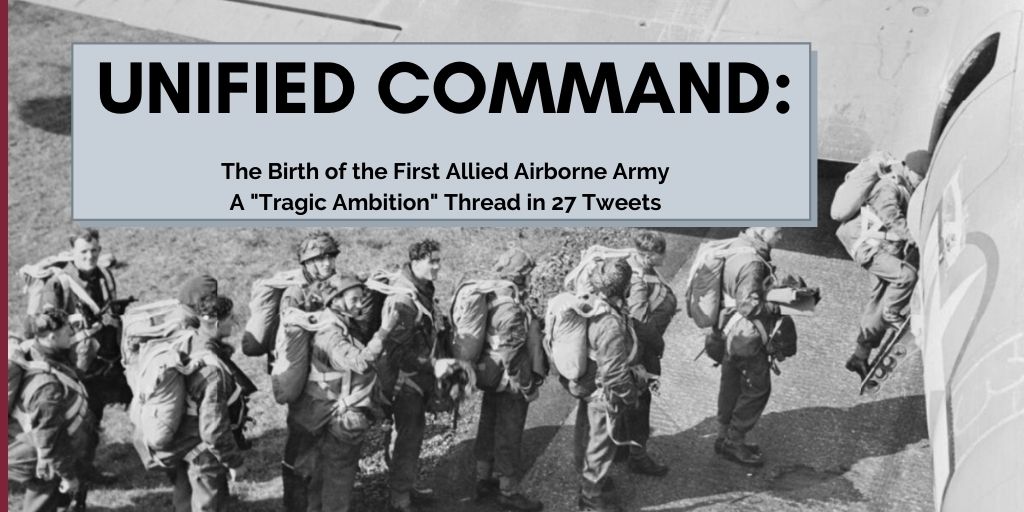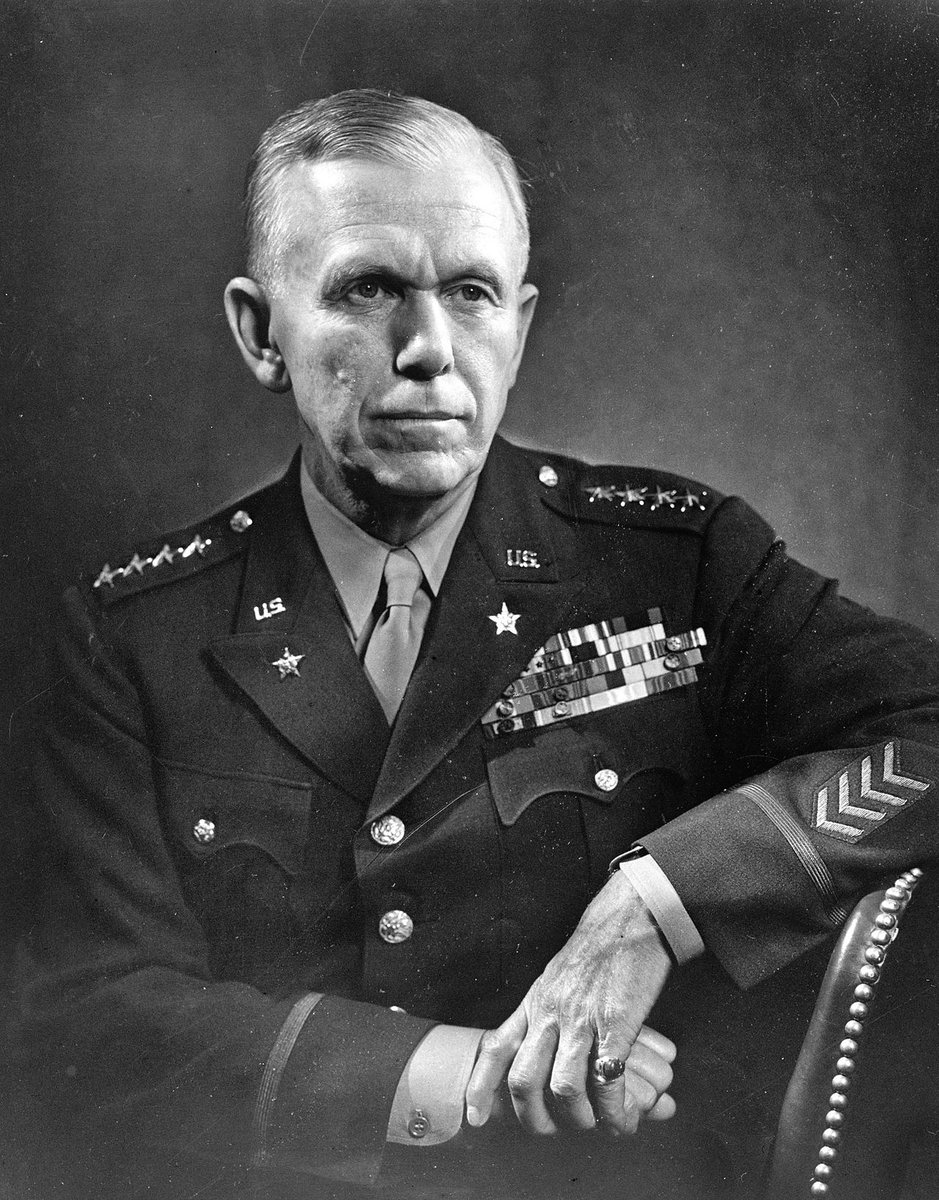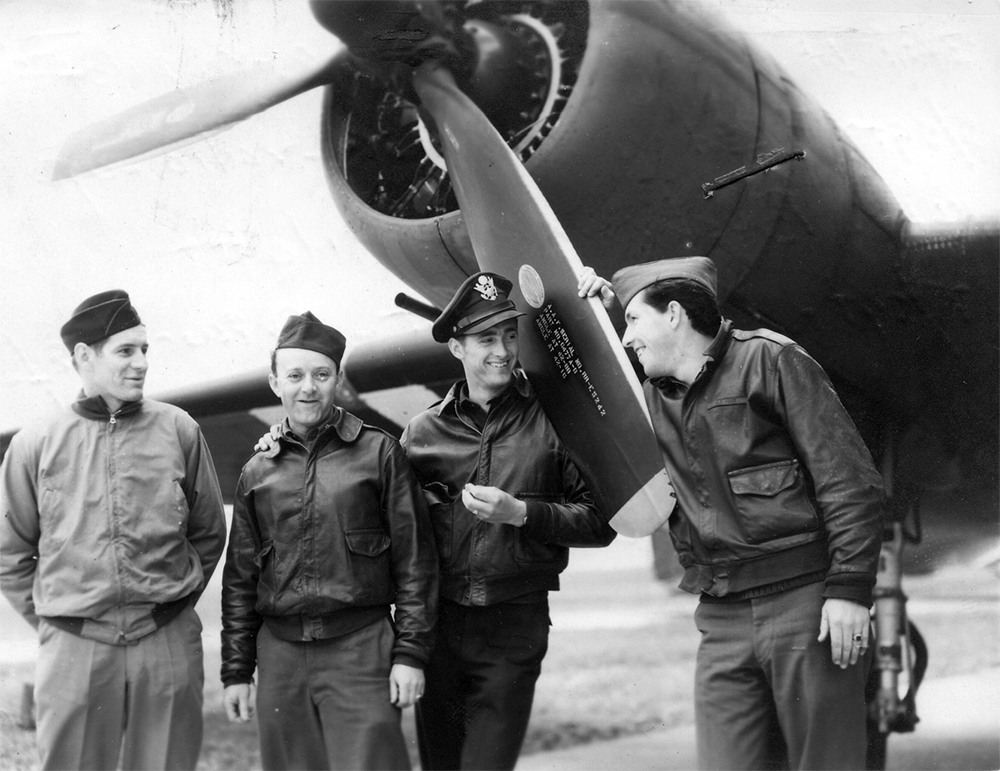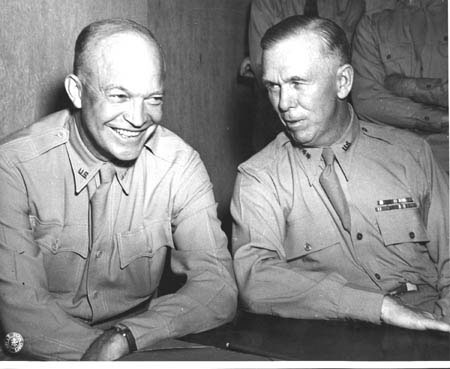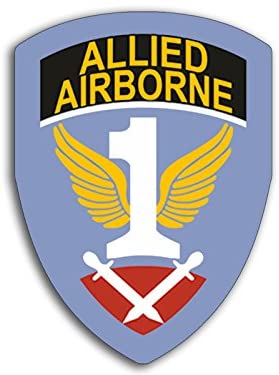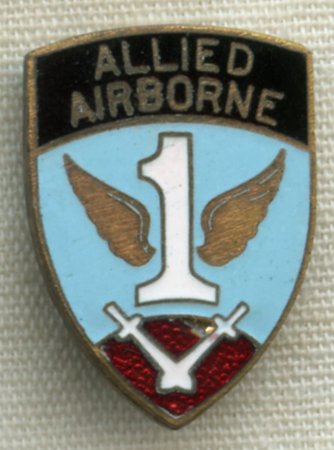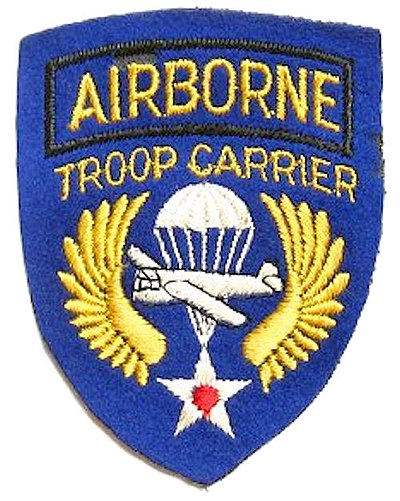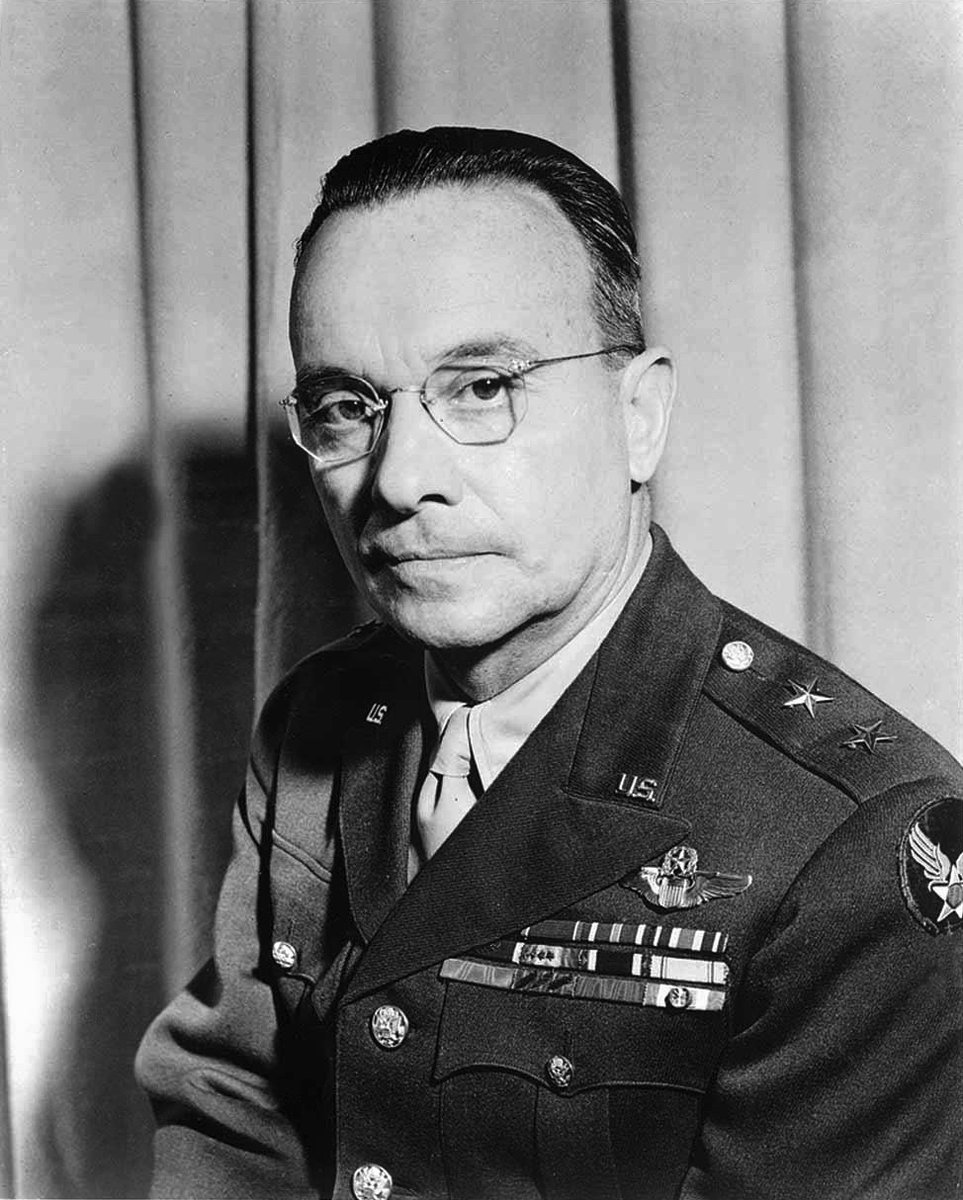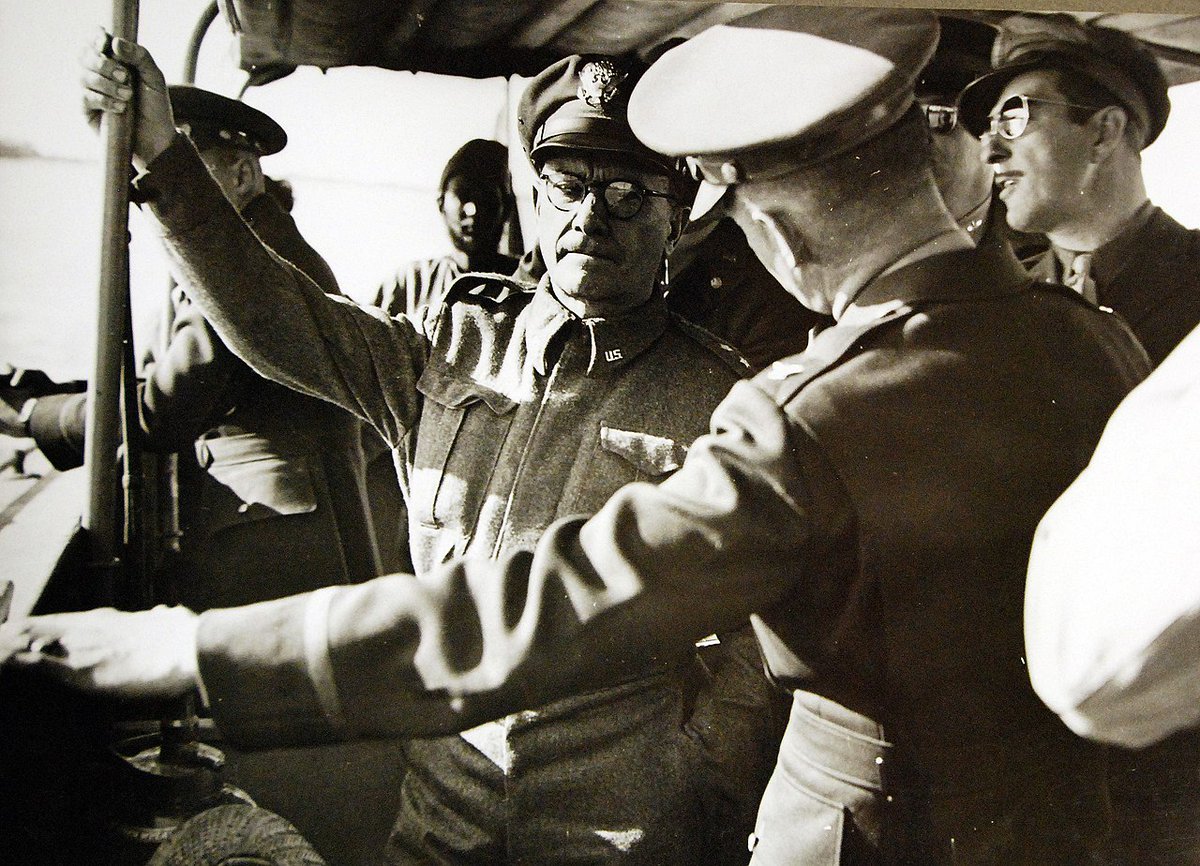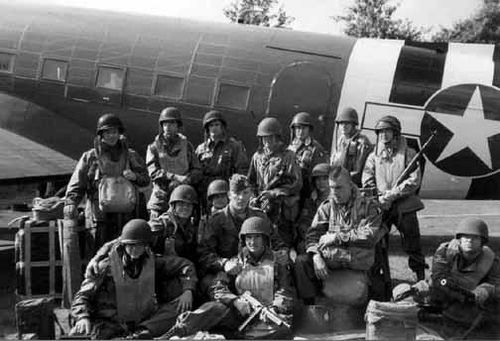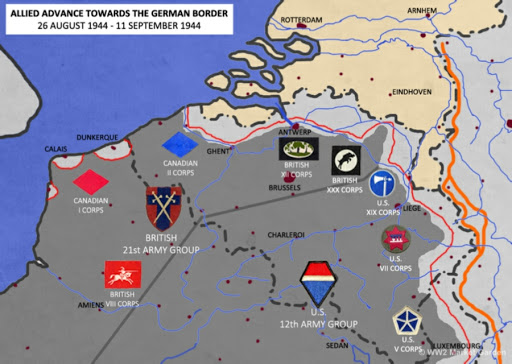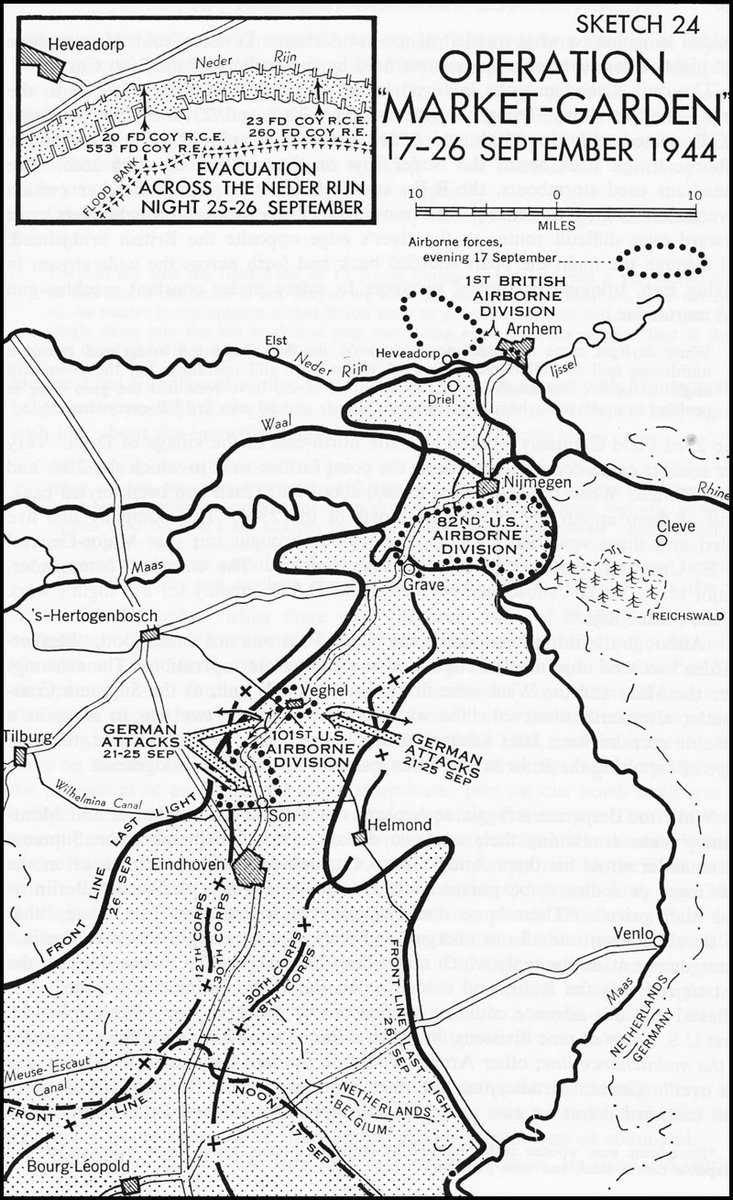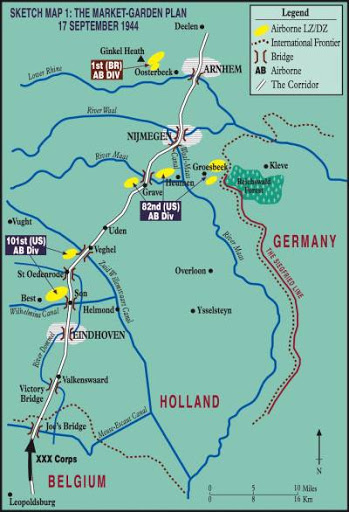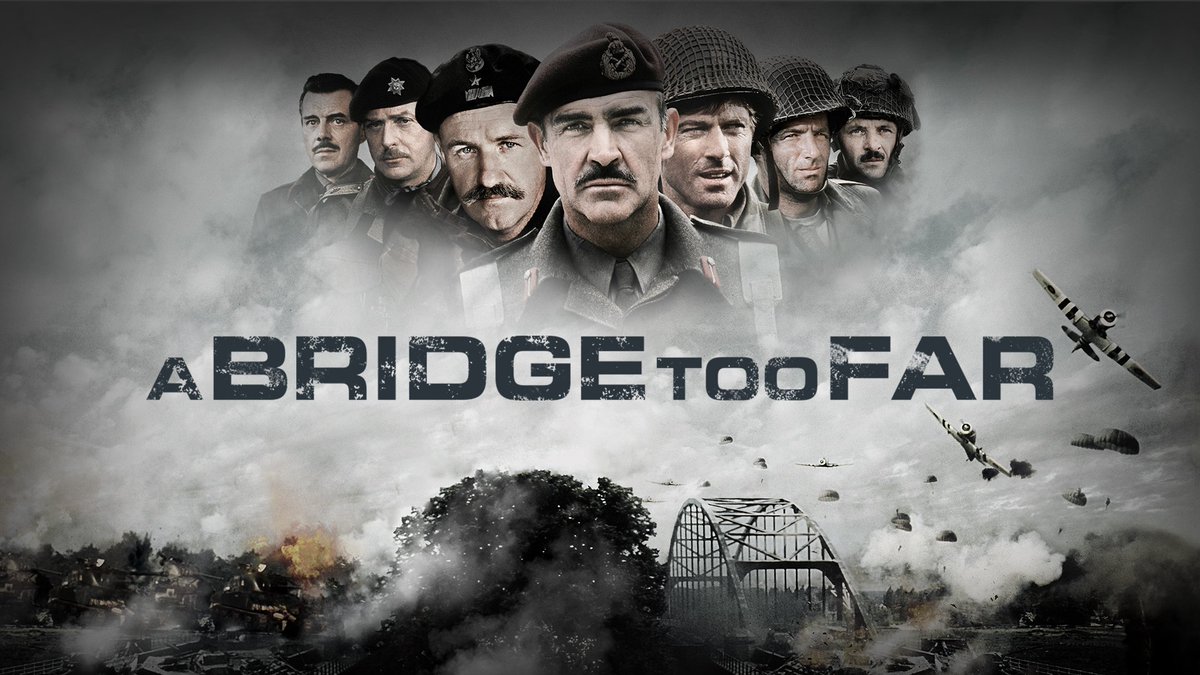2 of 30:
May 1944: George Marshall (Chief of Staff of the Army & driving force behind the combined chiefs of staff) saw these bunches of airborne forces (divisions and regiments), across the European theater without a centralized command body.
May 1944: George Marshall (Chief of Staff of the Army & driving force behind the combined chiefs of staff) saw these bunches of airborne forces (divisions and regiments), across the European theater without a centralized command body.
3 of 30:
Marshall wanted to harness all the Allied Airborne units consolidated under a single command to include the Troop Carrier units (the folks who maintained & flew the planes for the airborne units).
Marshall wanted to harness all the Allied Airborne units consolidated under a single command to include the Troop Carrier units (the folks who maintained & flew the planes for the airborne units).
4 of 30:
At the time of the D Day insertion, the Division was the highest level of Airborne command. Marshall wanted to go bigger with the airborne concept.
At the time of the D Day insertion, the Division was the highest level of Airborne command. Marshall wanted to go bigger with the airborne concept.
5 of 30:
There was some opposition to the idea. Some commanders thought the differences between British vs US equipment and different staff processes justified keeping units separate.
There was some opposition to the idea. Some commanders thought the differences between British vs US equipment and different staff processes justified keeping units separate.
6 of 30:
Part of this opposition came from the British side, concerned that there were significantly more US paratroopers than British. They didn’t want the Americans to rule all airborne operations.
Part of this opposition came from the British side, concerned that there were significantly more US paratroopers than British. They didn’t want the Americans to rule all airborne operations.
7 of 30:
There were also concerns about the troop carrier pilots – mostly Army Air Forces officers – within the same command as Army airborne troops. Just like our @USAirForce and @USArmy today, these units maintained different processes and standards.
There were also concerns about the troop carrier pilots – mostly Army Air Forces officers – within the same command as Army airborne troops. Just like our @USAirForce and @USArmy today, these units maintained different processes and standards.
8 of 30:
Marshall (and Eisenhower) gave these concerns due consideration but, in the end, ordered all of the troops and equipment required for airborne operations under a single command.
Marshall (and Eisenhower) gave these concerns due consideration but, in the end, ordered all of the troops and equipment required for airborne operations under a single command.
10 of 30:
The First Allied Airborne Army was responsible for all Allied Airborne units in Western Europe until the war ended.
The First Allied Airborne Army was responsible for all Allied Airborne units in Western Europe until the war ended.
11 of 30:
The IX Troop Carrier Command, an Army Air Forces unit responsible for air transport for all airborne forces in Europe, was also part of the First Allied Airborne Army.
The IX Troop Carrier Command, an Army Air Forces unit responsible for air transport for all airborne forces in Europe, was also part of the First Allied Airborne Army.
12 of 30:
The First Allied Airborne Army also had a few independent units to include the Polish First Independent Parachute Brigade.
The First Allied Airborne Army also had a few independent units to include the Polish First Independent Parachute Brigade.
13 of 30:
Paratroopers would operate under the First Allied Airborne Army until they were on the ground and logistical support could be handed over to the ground forces commander.
Paratroopers would operate under the First Allied Airborne Army until they were on the ground and logistical support could be handed over to the ground forces commander.
14 of 30:
US Army Air Force Lieutenant General Lewis Brereton was chosen to be the first commander of this new organization.
US Army Air Force Lieutenant General Lewis Brereton was chosen to be the first commander of this new organization.
15 of 30:
Louie was a pilot, a Army Air Forces officer. He commanded the Ninth Air Force during the early part of the Normandy campaign. This Airborne thing was a step down for him.
Louie was a pilot, a Army Air Forces officer. He commanded the Ninth Air Force during the early part of the Normandy campaign. This Airborne thing was a step down for him.
16 of 30:
For another thing, Brereton didn’t even think this unified airborne command was a good idea. He made a counteroffer to take command of only American Airborne units, but Eisenhower said no
For another thing, Brereton didn’t even think this unified airborne command was a good idea. He made a counteroffer to take command of only American Airborne units, but Eisenhower said no
17 of 30:
Another note about Louie: Nobody could get along with him. He was what Eisenhower would refer to as “prickly.” British and American officers disliked him equally.
Another note about Louie: Nobody could get along with him. He was what Eisenhower would refer to as “prickly.” British and American officers disliked him equally.
XVIII of 30:
Brereton only reluctantly agreed to his new appointment.
Brereton only reluctantly agreed to his new appointment.
19 of 30:
So, we’ve got this new airborne command. Now, to find a way to use it. There was considerable pressure on Allied leaders to use all these big airborne forces that were formed for the war in Europe and hadn’t really done much of anything.
So, we’ve got this new airborne command. Now, to find a way to use it. There was considerable pressure on Allied leaders to use all these big airborne forces that were formed for the war in Europe and hadn’t really done much of anything.
20 of 30:
In its first month, First Allied Airborne Army was tasked with many proposed Airborne operations. Some were nothing more than attempts to drop large airborne forces in Europe before the war ended. All of them were cancelled.
In its first month, First Allied Airborne Army was tasked with many proposed Airborne operations. Some were nothing more than attempts to drop large airborne forces in Europe before the war ended. All of them were cancelled.
21 of 30:
These airborne operations were about as dumb. Their operational names were even dumber: Wild Oats, Transfigure, and Hands Up.
These airborne operations were about as dumb. Their operational names were even dumber: Wild Oats, Transfigure, and Hands Up.
22 of 30:
As we’ve described, these Airborne operations were largely cancelled, in part, because the Allied advance into Europe after the Normandy invasion was faster than anticipated so there wasn’t really time to prepare and plan a proper Airborne insertion.
As we’ve described, these Airborne operations were largely cancelled, in part, because the Allied advance into Europe after the Normandy invasion was faster than anticipated so there wasn’t really time to prepare and plan a proper Airborne insertion.
23 of 30:
Then, in early September, Allied forces approached the Siegfried Line and started to slow down as German resistance increased.
Then, in early September, Allied forces approached the Siegfried Line and started to slow down as German resistance increased.
25 of 30:
Comet would have involved one Airborne Division, the British First Airborne Division with the Polish First Independent Parachute Brigade. But the plan was scrapped on 10 September 1944 after weather conditions and increasing concern of German counterattacks.
Comet would have involved one Airborne Division, the British First Airborne Division with the Polish First Independent Parachute Brigade. But the plan was scrapped on 10 September 1944 after weather conditions and increasing concern of German counterattacks.
26 of 30:
Shortly after Operation Comet was cancelled, a new operation was proposed, which was basically the same plan but with three Airborne Divisions (instead of one).
Shortly after Operation Comet was cancelled, a new operation was proposed, which was basically the same plan but with three Airborne Divisions (instead of one).
29 of 30:
The movie helped shape a myth about Operation Market Garden. Will describe in detail in the days to come.
The movie helped shape a myth about Operation Market Garden. Will describe in detail in the days to come.

 Read on Twitter
Read on Twitter